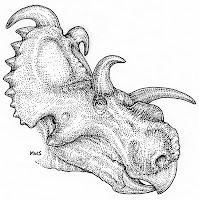Stonehenge
By RANDOLPH E. SCHMID, AP Science Writer
 England's enigmatic Stonehenge served as a burial ground from its earliest beginnings and for several hundred years thereafter, new research indicates. Dating of cremated remains shows burials took place as early as 3000 B.C., when the first ditches around the monument were being built, researchers said Thursday.
England's enigmatic Stonehenge served as a burial ground from its earliest beginnings and for several hundred years thereafter, new research indicates. Dating of cremated remains shows burials took place as early as 3000 B.C., when the first ditches around the monument were being built, researchers said Thursday.
 England's enigmatic Stonehenge served as a burial ground from its earliest beginnings and for several hundred years thereafter, new research indicates. Dating of cremated remains shows burials took place as early as 3000 B.C., when the first ditches around the monument were being built, researchers said Thursday.
England's enigmatic Stonehenge served as a burial ground from its earliest beginnings and for several hundred years thereafter, new research indicates. Dating of cremated remains shows burials took place as early as 3000 B.C., when the first ditches around the monument were being built, researchers said Thursday.And those burials continued for at least 500 years, when the giant stones that mark the mysterious circle were being erected, they said.
"It's now clear that burials were a major component of Stonehenge in all its main stages," said Mike Parker Pearson, archaeology professor at the University of Sheffield in England and head of the Stonehenge Riverside Archaeological Project.
In the past many archaeologists had thought that burials at Stonehenge continued for only about a century, the researchers said.
"Stonehenge was a place of burial from its beginning to its zenith in the mid third millennium B.C. The cremation burial dating to Stonehenge's sarsen stones phase is likely just one of many from this later period of the monument's use and demonstrates that it was still very much a domain of the dead," Parker Pearson said in a statement.
The researchers also excavated homes nearby at Durrington Walls, which they said appeared to be seasonal homes related to Stonehenge.
"It's a quite extraordinary settlement, we've never seen anything like it before," Parker Pearson said. The village appeared to be a land of the living and Stonehenge a land of the ancestors, he said. There were at least 300 and perhaps as many as 1,000 homes in the village, he said. The small homes were occupied in midwinter and midsummer.The village also included a circle of wooden pillars, which the researchers have named the Southern Circle. It is oriented toward the midwinter sunrise, the opposite of Stonehenge, which is oriented to the midsummer sunrise.
The research was supported by the National Geographic Society, which discusses Stonehenge in its June magazine and will feature the new burial data on National Geographic Channel on Sunday.
The researchers said the earliest cremation burial was a small group of bones and teeth found in pits called the Aubrey Holes and dated to 3030-2880 B.C., about the time with the first ditch-and-bank monument was being built.Remains from the surrounding ditch included an adult dated to 2930-2870 B.C., and the most recent cremation, Parker Pearson said, comes from the ditch's northern side and was of a 25-year-old woman. It dated to 2570-2340 B.C., around the time the first arrangements of large sarsen stones appeared at Stonehenge.
According to Parker Pearson's team, this is the first time any of the cremation burials from Stonehenge have been radiocarbon dated. The burials dated by the group were excavated in the 1950s and have been kept at the nearby Salisbury Museum.In the 1920s an additional 49 cremation burials were dug up at Stonehenge, but all were reburied because they were thought to be of no scientific value, the researchers said.They estimate that up to 240 people were buried within Stonehenge, all as cremation deposits.Team member Andrew Chamberlain suggested that that the cremation burials represent the natural deaths of a single elite family and its descendants, perhaps a ruling dynasty.A clue to this, he said, is the small number of burials in Stonehenge's earliest phase, a number that grows larger in subsequent centuries, as offspring would have multiplied.
Parker Pearson added: "I don't think it was the common people getting buried at Stonehenge — it was clearly a special place at that time. One has to assume anyone buried there had some good credentials."
The actual building and purpose of Stonehenge remain a mystery that has long drawn speculation from many sources.
And not all archaeologists agree with Parker Pearson's theory.
Indeed, the June issue of National Geographic Magazine quotes Mike Pitts, editor of the journal British Archaeology, as saying some details of the theory are problematic with gaps remaining to be filled. Uses of the landscape in the area for farming and grazing, for example, do not seem compatible with a ritualized place.
"The value of this interpretation is not just the idea of linking stones and ancestors, but that it works with the entire landscape," Pitts was quoted as saying.
Parker Pearson added: "I don't think it was the common people getting buried at Stonehenge — it was clearly a special place at that time. One has to assume anyone buried there had some good credentials."
The actual building and purpose of Stonehenge remain a mystery that has long drawn speculation from many sources.
And not all archaeologists agree with Parker Pearson's theory.
Indeed, the June issue of National Geographic Magazine quotes Mike Pitts, editor of the journal British Archaeology, as saying some details of the theory are problematic with gaps remaining to be filled. Uses of the landscape in the area for farming and grazing, for example, do not seem compatible with a ritualized place.
"The value of this interpretation is not just the idea of linking stones and ancestors, but that it works with the entire landscape," Pitts was quoted as saying.




Reacties